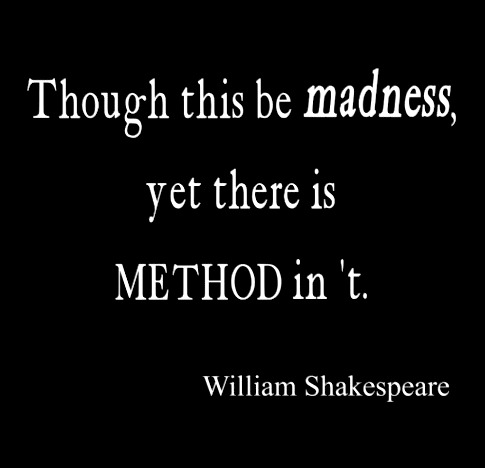 Everyone knows this expression: There was method to his madness.
Everyone knows this expression: There was method to his madness.
What does it mean? It means that regardless of how crazy the person acted, no matter how much he appeared to be nuts, behind that facade there was a solid plan, and that plan presumably resulted in successfully achieving what he set out to achieve.
It is this sense of ‘method’ I’m referring to in the title of this essay.
If there is any doubt about my message, here it is: To mobilize people behind any cause, regardless of how worthy that cause is, regardless of how intrinsically appealing it may be to get these folks marching, singing, chanting, shouting for that cause, if there is no clear strategy which targets an equally clear and obvious outcome, with a realistic expectation that the strategy will achieve that outcome, then the mobilization is a waste of time.
I didn’t say it wasn’t fun or satisfying. I didn’t say it didn’t have notable and perhaps positive collateral effects. But I am saying that anyone who thinks that mobilization is some guarantee of making substantial change and achieving desired reforms is surely kidding themselves.
This is why, despite being the biggest mass movement in recent history, OWS completely failed. Spokespersons for OWS will say it didn’t fail at all, because it had no preconceived agenda or goals. But that is a frivolous cop out. By the time OWS went international and ‘occupy’ was attached to everything from towns to shopping malls, labor unions, and even Facebook, there was certainly a goal. It may not have appeared on any official documents, but that was because as an experiment in unstructured, horizontal command-and-control, married to spontaneous democratic expression, any attempt at formalizing anything at all was discouraged and successfully thwarted.
Nevertheless, it was evident to everyone who watched the marches, read the protest signs, listened to the speeches, or was constantly bombarded by the most successful, ubiquitous meme to erupt in colloquial English in the last five decades — the 1% vs the 99% — exactly what all of the brouhaha was about.
In the broader sense, it was about the ruling class — the 1% — forcing its elitist world view and self-serving agenda on everyone else — the 99% — using their privilege and raw power to callously and ruthlessly turn everyday people into serfs.
In a more specific sense, it was about overwhelming, abusive, and anti-democratic wealth inequality. It was hardly random that the movement was started in the heart of America’s financial district and the anger and vilification was directed at incomprehensibly wealthy investment bankers and Wall Street high-rollers.
Of course, any thoughtful exploration of these two parallel themes — monopoly on power and obscene accumulation of wealth — would naturally conclude that they are inextricably related and mutually reinforcing. Not that there was much analysis going on. The OWS protests were pretty much an ‘it’s-us-against-them’ affair, with lots of noise and bluster, but with absolutely nothing remotely resembling a grab for power anywhere in sight.
Thus, in terms of specific demands, it was quite common for news commentators to ask: What do the protestors want?
This was a legitimate if mostly rhetorical question. As a matter of record, there were no actual demands aired by the movement, much less tacit undercurrents of a coup d’etat.
There weren’t any coherent demands, no specific policy proposals, not even obvious ones. It wouldn’t have been out of place, as an example, to at least talk about GBI — guaranteed basic income — as a conspicuous path to begin addressing the grotesque level of wealth inequality.
There were no hard and fast calls for student debt forgiveness, free college education, mortgage default relief, capping credit card interest rates, free access to universal health care, and a host of other palliatives which would have somewhat reduced the wealth gap.
This is not a criticism of OWS or anyone who bobbled up, even if temporarily, from the rank-and-file to take credit — or blame, depending on where you stand in judgment — for what happened. OWS was an intriguing and inspiring new experiment in activism, which attempted to skirt the usual pitfalls of hierarchical, top-down organization. It was what it was, and I believe should be respected for that.
But that doesn’t prevent us from learning from it, and taking every precaution to not make the same mistakes again.
If you’re going to assemble a mob, give them something to do.
Give them something which will make a substantial and decisive difference.
Camaraderie is a good thing. It’s a social high. Feeling like you’re part of something offers relief from a sense of isolation and helplessness.
But it’s only a feeling. It’s not politics. Politics is about power. Only power can confront power.
After the marches are done, after the protest signs are put away, when we’re in our cars or on buses headed back home, we always need to ask ourselves: Do we now have power to implement the changes we want?
If the answer is ‘no’, then we didn’t have an effective plan.
The best time for an effective plan is BEFORE we hit the streets, before we march and sing our songs, before we waste valuable time and energy in a frustrating and fruitless attempt to get those NOW IN POWER to do anything for us. Asking the the ruling elite and their lapdogs in our governing institutions to listen to our demands and serve our interests is like asking a carjacker to be sure and wash our automobile and return it in the morning with a full tank.
Here comes my plug: I have an end-to-end plan, a carefully-crafted strategy for engaging a broad base of U.S. citizens, uniting them into an overwhelming voting bloc, directed at stopping America’s out-of-control militarism and endless wars of aggression.
You can get a general idea here: The Peace Dividend
Next time we march for peace, we’ll know where we’re headed and how to get there.
At least, that’s the hope that gets me from day to day in these insane times.
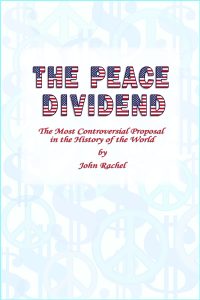 The Peace Dividend: The Most Controversial Proposal in the History of the World is now available both as an ebook and deluxe paperback at many of the usual outlets . . .
The Peace Dividend: The Most Controversial Proposal in the History of the World is now available both as an ebook and deluxe paperback at many of the usual outlets . . .
Amazon (Kindle) / US . . . amzn.to/2cpIRfQ
Amazon (Print) / US . . . amzn.to/2cEhnCb
Amazon (Kindle) / Canada . . . amzn.to/2ciZKdl
Amazon (Kindle) / Japan . . . amzn.to/2cbf3TO
Barnes & Noble . . . bit.ly/2cWxvzd
Kobo (Indigo) . . . bit.ly/2cI8cB6
Apple iTunes . . . apple.co/2cqw7an
Smashwords . . . bit.ly/2cb6Cse
Direct from printer . . . bit.ly/2c3mJsl


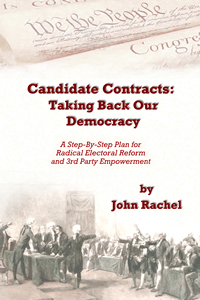














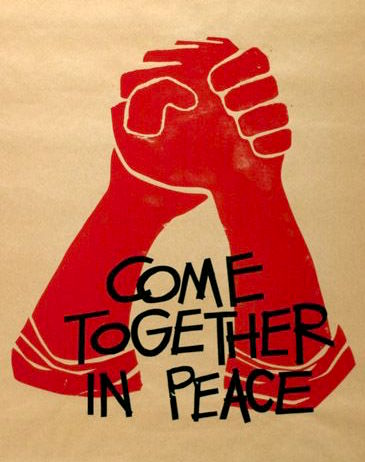
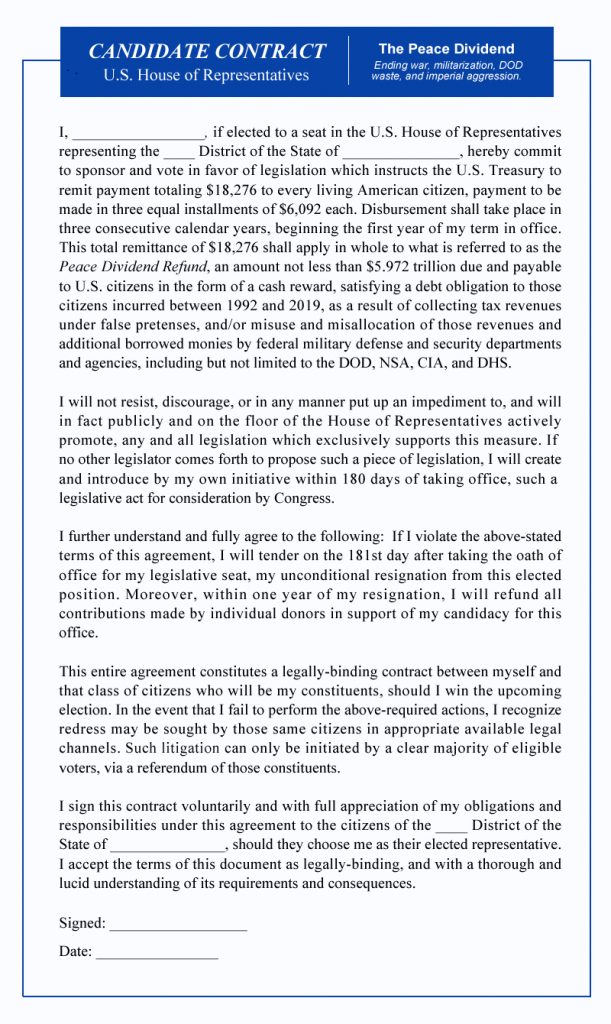



Life In Japan: Clouds of Pollen in the Spring
“The awareness is spreading like clouds of pollen in the spring.”
That was a comment I made on a progressive website about the worldwide demonstrations, street protests, and rallies celebrating this year’s Earth Day.
I must confess that until two weeks ago I had a highly prejudiced understanding and appreciation of pollen. I associated it with red, runny noses, puffy, squinting eyes, an annual epidemic of misery among a sizeable chunk of the population. This limited and highly negative view was shaped by thousands of ads for over-the-counter remedies which had been embedded in my brain, probably from my first days of watching TV as a child.
Of course, a little basic biology is a powerful corrective. We find that pollen is the delivery mechanism of male sperm cells for plants. Pollination is about reproduction. It’s how vast landscapes are turned into breathtaking fields of flowering plants, a floral explosion that here in Japan transforms the whole country into a beautiful garden stretching sea to sea.
My awakening, however, did not come from a text book. It came — as is quite common these days — from my lovely and truly brilliant Japanese wife.
However, I mentioned casually to her that is seemed a little hazy that day. We’re downwind from the China mainland, which hosts many coal-fed power plants, heavy-industry factories, and the like, so I just assumed it was the usual dust and smoke blowing our way from our Chinese neighbor.
“No, that’s pollen,” explained Masumi. She directed my gaze to the face of a forested mountain we were passing. There was a huge puff of what appeared to be smoke, but not really the color of smoke, or the way smoke looks rising from burning debris. No, it was a cloud of pollen, which was being released in that section of the forest, I assume from the floral undergrowth beneath the trees.
Thus began my quick education and new respect for pollen. That cloud was the promise for the continuing regeneration of the awe-inspiring bouquet we and others across Japan were now enjoying.
Okay. I believe in balanced reporting. So let me explore the other side of this story.
Some folks are allergic to pollen. Those ads for over-the-counter remedies turn their misery into cold, hard cash for the manufacturers of these palliatives. Point taken.
I would surmise the notion of beauty for such champions of greed is skyrocketing returns on investments and a bulging portfolio of winning stocks. I seriously doubt either of those has much of a fragrance though I may have on occasion heard someone say: “That person smells of money.”
For these individuals, flowers are “beautiful” depending on how marketable they are and what sort of profits they produce. With no sense of irony, they would deem the distress of those allergy sufferers as an opportunity to turn a profit. The more misery these folks have to endure, the better the prospects for some fat returns on pharmaceutical stocks.
We’re told that this is the new way to look at the world. Those old valuations — meaning just the basic use of our senses, and gauging the world around us by the joy and delight we feel in our hearts — are passé, and have been replaced by the new tools of capitalism, the free market, and the now dominant neoliberal paradigm.
Yet, the Earth day protests and celebrations convincingly offered a very different message. That message was loud and unambiguous. Treating the Earth as a factory for man-made goods, narrowing the contribution of human beings to merely producing and consuming those goods, subjecting everything from happiness and love to the value of a human life, only to the metrics of economic worth, reducing all of the potential for human creativity, ingenuity, compassion, nobility, vision, altruism, excellence, and achievement, to mere numbers on a spread sheet, is suffocating the human race, exterminating the human family, eviscerating the human spirit, and destroying the planet.
I’ve made my choice. It took me a while to come around.
I’ll take my chances with the clouds of pollen.